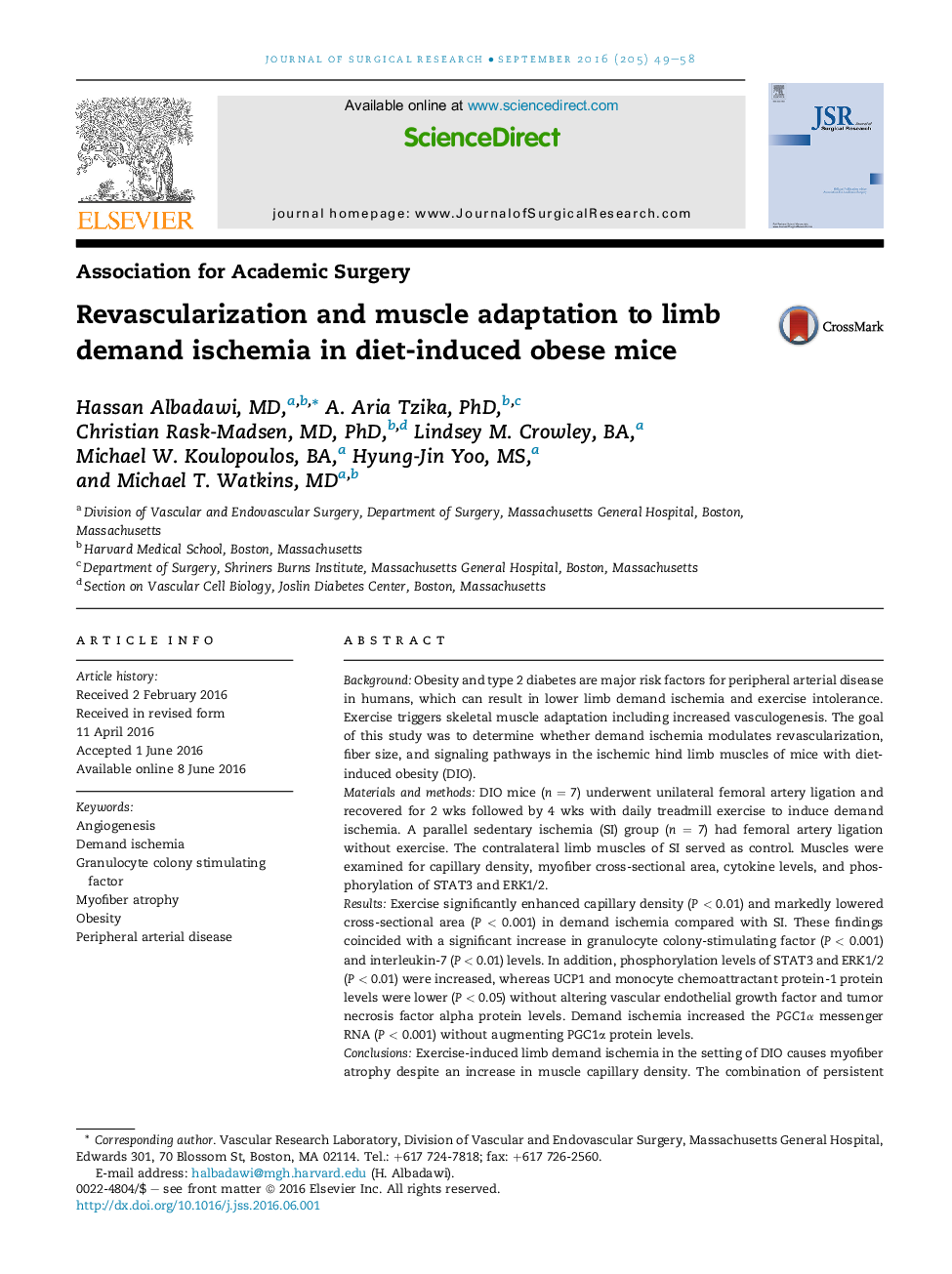| کد مقاله | کد نشریه | سال انتشار | مقاله انگلیسی | نسخه تمام متن |
|---|---|---|---|---|
| 4299336 | 1288388 | 2016 | 10 صفحه PDF | دانلود رایگان |
BackgroundObesity and type 2 diabetes are major risk factors for peripheral arterial disease in humans, which can result in lower limb demand ischemia and exercise intolerance. Exercise triggers skeletal muscle adaptation including increased vasculogenesis. The goal of this study was to determine whether demand ischemia modulates revascularization, fiber size, and signaling pathways in the ischemic hind limb muscles of mice with diet-induced obesity (DIO).Materials and methodsDIO mice (n = 7) underwent unilateral femoral artery ligation and recovered for 2 wks followed by 4 wks with daily treadmill exercise to induce demand ischemia. A parallel sedentary ischemia (SI) group (n = 7) had femoral artery ligation without exercise. The contralateral limb muscles of SI served as control. Muscles were examined for capillary density, myofiber cross-sectional area, cytokine levels, and phosphorylation of STAT3 and ERK1/2.ResultsExercise significantly enhanced capillary density (P < 0.01) and markedly lowered cross-sectional area (P < 0.001) in demand ischemia compared with SI. These findings coincided with a significant increase in granulocyte colony-stimulating factor (P < 0.001) and interleukin-7 (P < 0.01) levels. In addition, phosphorylation levels of STAT3 and ERK1/2 (P < 0.01) were increased, whereas UCP1 and monocyte chemoattractant protein-1 protein levels were lower (P < 0.05) without altering vascular endothelial growth factor and tumor necrosis factor alpha protein levels. Demand ischemia increased the PGC1α messenger RNA (P < 0.001) without augmenting PGC1α protein levels.ConclusionsExercise-induced limb demand ischemia in the setting of DIO causes myofiber atrophy despite an increase in muscle capillary density. The combination of persistent increase in tumor necrosis factor alpha, lower vascular endothelial growth factor, and failure to increase PGC1α protein may reflect a deficient adaption to demand ischemia in DIO.
Journal: Journal of Surgical Research - Volume 205, Issue 1, September 2016, Pages 49–58
